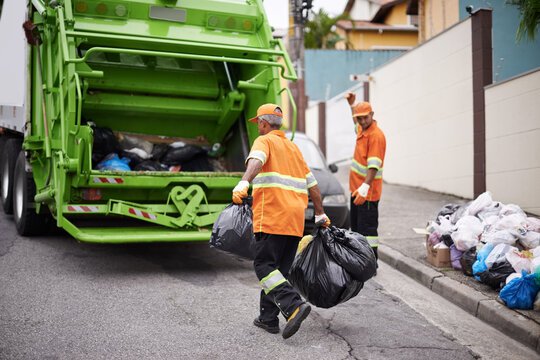A cluttered warehouse doesn’t just look messy — it can slow down productivity, create safety hazards, and make inventory management a nightmare. Over time, unused equipment, broken pallets, outdated products, and random junk can pile up, eating away at valuable space. That’s where warehouse cleanouts come in.
In this guide, we’ll explore how to maximize your warehouse space, improve safety, and maintain an efficient work environment with a strategic cleanout plan.
Why Warehouse Cleanouts Are Essential
1. Improves Operational Efficiency
A clean, organized warehouse allows workers to move freely, access inventory quickly, and avoid time wasted searching for misplaced items.
2. Enhances Workplace Safety
Cluttered walkways, stacked debris, and unstable shelving are common causes of warehouse accidents.
3. Frees Up Valuable Space
Unused inventory and outdated equipment can take up prime storage space that could be used for active stock.
Step 1: Evaluate the Current Warehouse Condition
Before beginning the cleanout process:
-
Perform a full walkthrough of the warehouse
-
Identify blocked pathways or unsafe storage areas
-
Note outdated inventory, broken machinery, and non-essential items
-
Determine whether commercial junk removal services are needed for large-scale hauling
This evaluation will help set priorities and identify safety concerns.
Step 2: Create a Clear Cleanout Plan
Divide the warehouse into sections for systematic cleaning:
-
Clear Aisles and Pathways – Remove obstructions to improve traffic flow.
-
Sort Items by Usefulness – Keep only items that are still functional and necessary.
-
Remove Junk and Scrap – Use professional junk hauling for large or heavy items.
-
Deep Clean Floors and Shelving – Remove dust, oil spills, and debris to prevent hazards.
Step 3: Address Safety Hazards Immediately
Warehouse cleanouts are the perfect time to identify and fix safety risks:
-
Remove loose wires and trip hazards
-
Discard damaged pallets
-
Relocate hazardous materials to proper storage
-
Install safety signage where needed
Step 4: Incorporate Recycling and Disposal Practices
Large warehouses often accumulate cardboard, scrap metal, and old electronics. Opt for eco-friendly waste disposal methods to:
-
Reduce landfill waste
-
Reuse materials when possible
-
Meet environmental compliance standards
Step 5: Use the Right Tools and Equipment
Depending on the size of your warehouse cleanout, you might need:
-
Forklifts and pallet jacks
-
Industrial vacuums
-
Trash bins and dumpsters
-
Protective gloves, masks, and safety gear
Professional cleanout teams already have access to this equipment, which speeds up the process and reduces downtime.
Step 6: Schedule Cleanouts Regularly
A one-time deep clean is great, but without ongoing maintenance, clutter will build up again. Create a schedule for quarterly or bi-annual cleanouts to keep your space safe and organized.
Best Practices for Warehouse Cleanouts
-
Label and Organize Inventory – Clear labels make restocking and retrieval faster.
-
Remove Expired Stock – Prevent wasted storage space and maintain product quality.
-
Train Staff on Cleanliness Standards – Everyone should know their role in maintaining order.
-
Keep Safety First – Never sacrifice safety for speed.
Common Mistakes to Avoid
-
Ignoring recycling opportunities for scrap and packaging
-
Rushing without a proper plan, leading to missed areas
-
Failing to involve professional services for heavy or hazardous items
-
Not documenting changes for inventory tracking
Conclusion
A warehouse cleanout is more than just a cleaning task — it’s an investment in safety, productivity, and operational efficiency. By incorporating commercial junk removal, professional junk hauling, and eco-friendly waste disposal, you can reclaim valuable space, protect your employees, and streamline your workflow.
Whether you run a small storage facility or a massive distribution center, a well-executed cleanout can transform your warehouse into a safer, more productive space.
FAQs About Warehouse Cleanouts
Q1: How often should I do a warehouse cleanout?
Most warehouses benefit from quarterly or bi-annual cleanouts, depending on inventory turnover.
Q2: Do I need professional help for a warehouse cleanout?
Yes, especially if you have large, heavy, or hazardous items that require special disposal.
